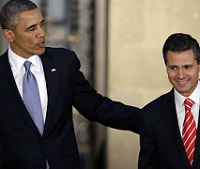
Obama Has Nothing to Gain by Propping Up Mexico’s Government
If Washington gives the Mexican president a pat on the back, it will be a stab in the back for the Mexican movement for justice and transparency.

If Washington gives the Mexican president a pat on the back, it will be a stab in the back for the Mexican movement for justice and transparency.
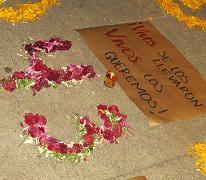
While the Mexican government has scrambled to present the Ayotzinapa student massacre as a case of low-level corruption that can be solved by shuffling police units and criminalizing the protests that brought international scrutiny, a new report emerged claiming that federal police also participated in the torture and disappearance of the students. U.S. intervention in Colombia shows why the state violence evident in Ayotzinapa is anything but an isolated incident.
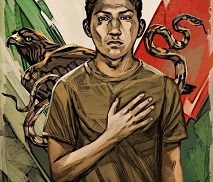
The orphans of the Ayotzinapa tragedy are not alone in their determined search for their lost loved ones in the chaos of burning garbage dumps and ditches filled with human remains.
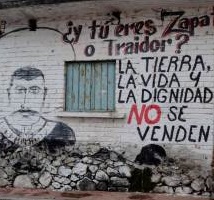
General Emiliano Zapata would roll over in his grave. The Morelos Integral Project, or PIM for its initials in Spanish, is a 160-kilometer natural gas pipeline and two thermo-electric plants in the heart of Mexico’s fertile central valleys, and in the shadow of an active volcano, Popocatépetl. […]
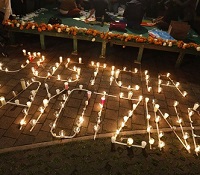
The disappearance of 43 students from a rural school in Ayotzinapa, Mexico dedicated to training teachers that are mostly from indigenous communities has sparked outrage and solidarity throughout Mexico and the world.
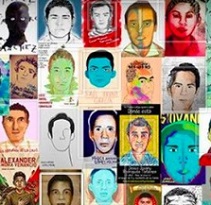
Vivos se los llevaron y vivos los queremos. “Alive, they were taken, and alive we want them back,” became the national and international public’s rallying cry for the 43 disappeared male student teachers attacked by municipal police and then handed over to the Guerreros Unidos drug gang on September 26, 2014 in Iguala, Guerrero, Mexico.
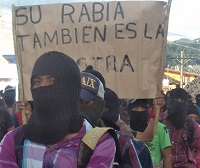
“Because those of us below hurt with rage and rebellion, not with resignation and conformity.” —EZLN, October 19, 2014 […]
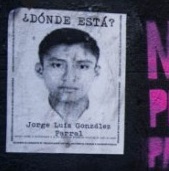
The massacre and subsequent disappearance of the Ayotzinapa students, known as “normalistas,” has sparked an international movement demanding that the 43 students be found alive. But it has also called into question the deep ties between drug cartels and Mexican politicians.
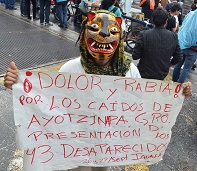
The huge demonstration on October 2, 46 years after the massacre of Tlatelolco in the Plaza of 3 Cultures in Mexico City, was marked by mourning. First was the recent death of Raúl Álvarez Garín, student leader of the ’68 movement and central to conserving the memory of the movement and the fight to punish the assassins. To that was added the lethal attack on the education students of Ayotzinapa. […]
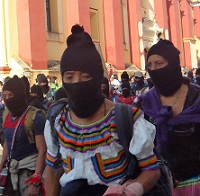
Some twenty thousand members of the bases of the Zapatista Army for National Liberation marched briskly through San Cristobal de las Casas on October 8. They gathered on the outskirts of the city, under a blue sky stained with clouds that threatened rain and then walked in long, orderly lines toward the central plaza of the city.
Copyright 2003-2018 Upside Down World